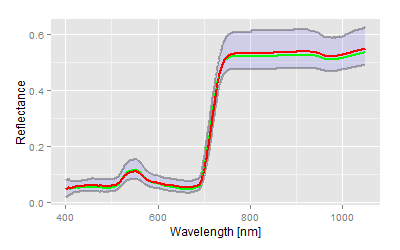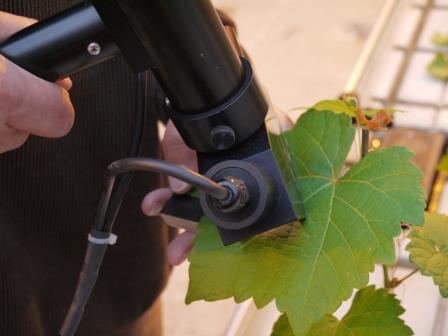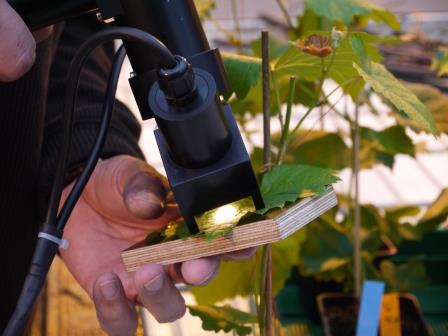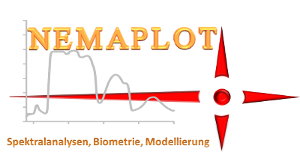
Type of measurements in lab, greenhouse and field experiments
The technique ranges from transportable handheld and ground-based devices up to airborne and satellite based system in the remote sensing area. For the ground-based devices we can differentiate between purely reflectance based on sunlight and those with additional light system. You gain a typical spectrum of a green canopy or leaf with its characteristic reflectance pattern with sometimes more or less disturbances on the reflectance axis.Measuring in a kind of high-throughput method in greenhouses etc., we achieved the best results with a contact probe devices, an add-on with internal light supply.
The method is fast, you can do several measurements on one leaf/plant, spectra are normally not disturbed by external impact factors and are ideal for a descent analysis, even when differences are marginal only. The description is not complete, there are more sensors on the market, but limited to our personal experiences on this page.
| So far Nemaplot has worked with the following devices: | Explanation |
|---|---|
 |
Canopy measurements, i.e. the sensor measures the reflectance by natural sun light above the canopy. The signature might be disturbed by both leaf architecture and leaf movement (wind). The use of a white standard with varying light conditions is crucial. You get the mean reflectance signal of an area varying with the extent of your sensor head. |
 |
The size of the sensor is portable (Example of ASD), control by notebook. We use a hand barrow with a fixed sensor arm for field measurements. Large repetition numbers per plot are possible, but constant distance to measured object should be maintained. |
 |
Canopy measurement device by TEC5 AG) with automatic light correction, wavelength domain up to 1600 nm. Again, mean signal per area, high throughput, but advanced exposure times sometimes require a short stops. |
 |
Contact probe with integrated light source by ASD, defined light with respect to sensor resolution. You gain a mean spectrum of a leaf determined by the size of the plant probe. One of our favourite. No light disturbances, good to handle for fast measurements (but could seriously be improved from the handling side), spectrum is clear, no scatter in single domains. You have contact to the object, means, a frequent cleaning is crucial. If you don't know what is meant, measure some tomato leaves. We found the use of a black background counterpart most suitable to avoid squeezing of leaves, accelerate the measurement frequency drastically. |
 |
Use of the contact probe in a greenhouse experiment, both measurements taken from leaves and fruits are possible. High-throughput needs certain infrastructure for sensor transport. A measurement size of 1000 plants/day is possible. |
 |
Crop measurement with contact probe in rice. Smaller leaf lamina than the area of the contact probe can cause problems. Fixing the leaf to the middle of the plant probe is minimising the source of error. |
 |
Contact sensor (product of TEC5 AG) with a light source adapted to the wavelength of the sensor. |
 |
As above, contamination by light from the side is possible resulting in problems in greenhouse experiments. |
 |
Drone based hyperspectral camera (property of workgroup Prof. Bareth, University of Cologne,
Germany) Camera made by Cubert GmbH |
 Evaluation reinvented
Evaluation reinvented
